Tool Time for Fracking
I recently visited a customer who is producing fluid ends for the fracking industry in P20 steel material. The company’s operators wanted to reduce cycle time by rough boring instead of performing helical interpolation with a mill. With a little knowhow and the right tools, we were able to significantly reduce cycle time.
Helical Interpolation vs. Rough Boring
Helical interpolation relies on the machine tool axes to produce output. A milling cutter, smaller in size than the desired bore size, is run along a helical path to open up the bore. For one-off projects, low production runs, or shallow bores, it can be a good stand-in solution. Keep in mind, though, that radial forces are constantly exerted on the spindle, so increased wear on the bearings can be a concern, as well as tool stability for longer tools. With a twin rough boring you are just plunging the tool axially, so it’s a more stable operation; the radial cutting forces are balanced, and the result is axial force back into the machine spindle. This also becomes a factor when deeper bores require longer tool lengths. The deflection of a milling cutter will decrease its productivity much faster than a boring tool as tool length increases. And when that productivity difference is amortized over a long production run, boring becomes
increasingly valuable.
Boring is not without its limitations, however. For instance, with the boring operation, an operator is limited in the amount of stock per pass that can be removed. This is because you can only cut as wide as your inserts. For large stock allowances, the boring head can be configured for stepped cutting, where the cutting edges are staggered in both height and diameter. This can permit roughing passes that open a bore by more than 1" (25.4 mm) per pass, but the feed rate is reduced because the tool becomes single-edge effective. With a milling tool, you can program whatever path is required to reach the desired size, and produce large faces at the bottoms of bores if they do not go completely through the part. Again, the sacrifice is time.
The truth is, when axial feed rates are compared for both operations in multiple materials, rough boring heads, such as the Kaiser SW Series 319, are faster for roughing operations. Two cutting edges are faster and less costly to index versus helical cutters with several inserts per cutting flute.
Determining which operation you choose to use really depends on the production requirements of the job. A lot of companies, when they start off doing it, look at their tooling costs, and one size helical mill can do an infinite size range, so they choose helical interpolation. But as production goes up, as it has been recently in the burgeoning energy industries (especially fracking), cycle time becomes an issue. In this case companies gradually turn to the boring tools because as you specialize in longer runs, and require repeatability, an operator generally will end up with diminishing returns for the versatility milling can provide.
Fracking and Boring
Many of BIG Kaiser’s customers had worked in oil & gas for some time, but when fracking took off last summer job shops began to redouble their efforts in this area. The industry that had started in Oklahoma and Texas quickly spread as far north and east as Ohio, Michigan and Pennsylvania. Even more new gas deposits were discovered, and there was an arms race of sorts to equip these fracking operations with components to access the gas.
One company, in particular, had the machining capacity to meet the early stage demands of the fracking craze, but once their orders really began to spike, operators realized that they needed to change their process to keep up. The operation involved starting bores of Ø3.625" (92.1 mm), which need to open to Ø4.100" (104.1 mm), boring from both sides at a depth of 9.5" (241.3 mm). This customer was interpolating, and had been using a competitor’s product to finish bore. This resulted in issues with holding size and chatter; luckily, the company had discovered BIG Kaiser while looking for finish boring alternatives. The finish boring tools provided the capability to hold size consistently, so when the company realized that they needed to be roughing faster, operators naturally turned to BIG Kaiser for the rough-boring tools as well. They were using a Kaiser finish-bore regardless, adding a rough boring operation from Kaiser just helped to speed things up.
I used the 319 SW twin cutting head in the balanced (RSS) setting with CC12 inserts of grade TNP12 and started running at a speed of 500 sfm (152.4 surface meters/min [smpm]) and feed of 0.020 ipr (0.51 mm/rev) and 1000 psi (6895 kPa) coolant through the tool. We always recommend coolant to help with chip evacuation. Usually, an operator is limited to what they have on the machine when it comes to through coolant. As for speed, 500 sfm is typically a safe starting point for P20 steel material.
Tool lengths were a little bit long, but with BIG Kaiser’s lineup of tooling, the operator was still able to run at a reasonable rate. The feed rate of 0.020 ipr is a standard starting point, provided you have a rigid tool and a workpiece that’s rigidly fixtured.
Dealing with Chips
My initial setup ran quietly without chatter, but I noticed stringing chips in the bore that hadn’t been evacuated. The spindle load was at around 40%, so I increased the feed to 0.024 ipr (0.61 mm/rev) on the next bore. The chips were still a little long, but they were not nesting together, and the coolant supply was able to flush them from the bore. The inserts needed to be indexed before we could run on the opposite side, where there is a heavy interruption. The tool ran fine until the interruption—when we lost both cutting edges.
I then decided to switch to the TNP14 inserts, which are a tougher grade and have a flatter chip-breaking geometry and are similar to inserts the customer uses on other tools with much success in this material. We were able to get three bores with this insert, even in the heavily interrupted bores. And when we increased the speed to 600 sfm (182.88 smpm) and feed to 0.026 ipr, (0.6604 mm/rev) the chips were very short, which made the process highly repeatable, as the chips are easily evacuated from the bore. The bore sizes will also be more repeatable versus the helical interpolation, which makes a more repeatable process for the BIG Kaiser 310 EWN heads they were already using for the finish boring.
Both helical interpolation and rough boring have their places in holemaking operations for oil & gas industry applications, such as fracking. Each has its advantages and limitations. The sheer flexibility of a mill in helical interpolation can make it a good solution for shallower holes or one-off projects that don’t merit a dedicated tool-up. But as these types of orders grow, the comparative speed, especially in deeper cuts, becomes magnified, and rough boring exponentially laps helical interpolation in terms of production. Making the switch just requires the right tools with enough rigidity and repeatability to take on the large orders stemming from the rise of the fracking industry.

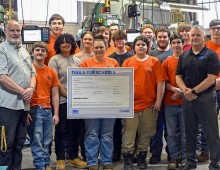


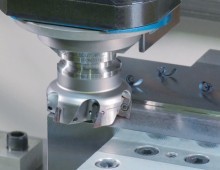
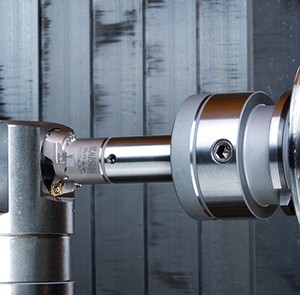
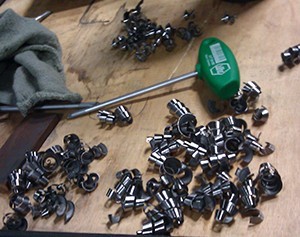
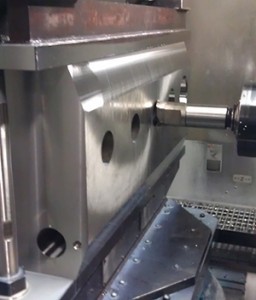
Did you find this interesting or helpful? Let us know what you think by adding your comments or questions below.